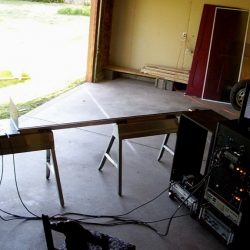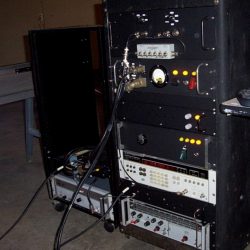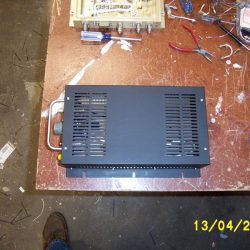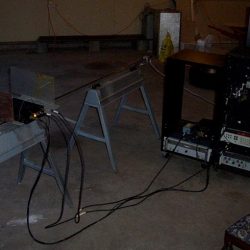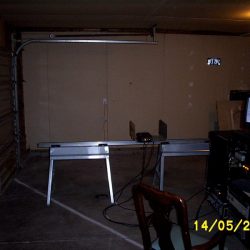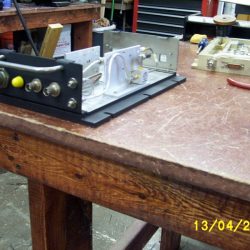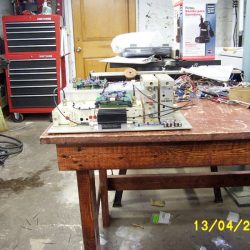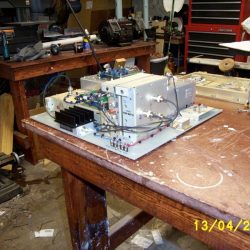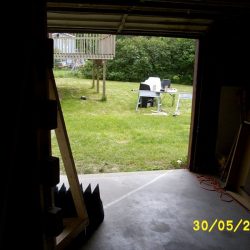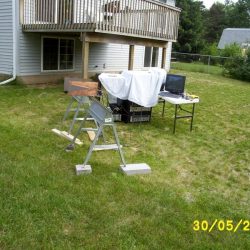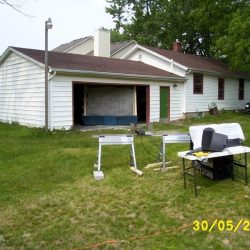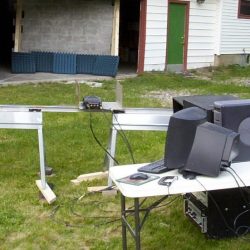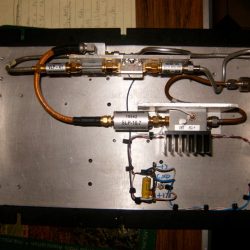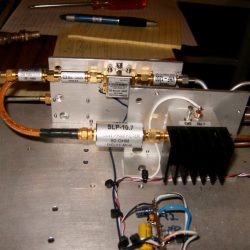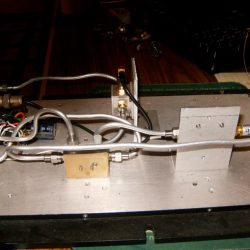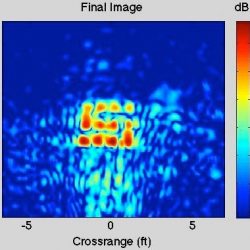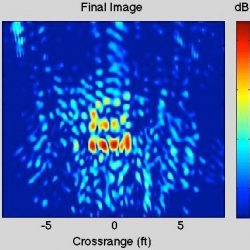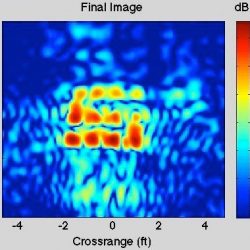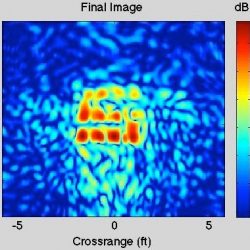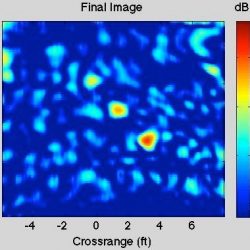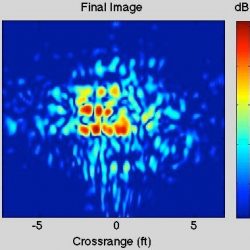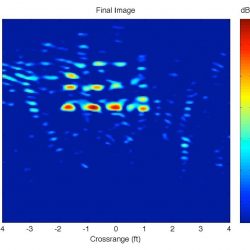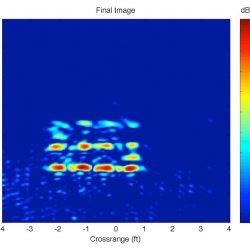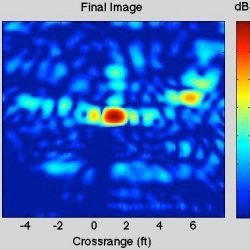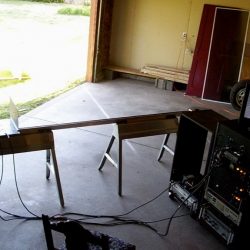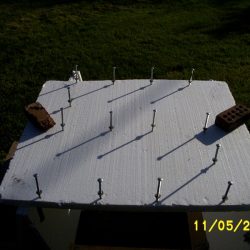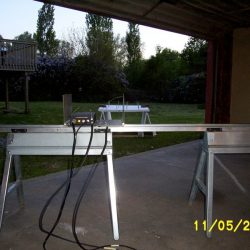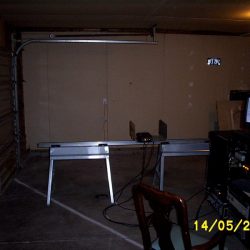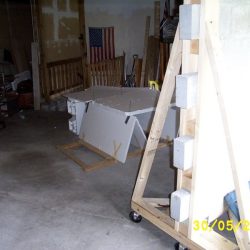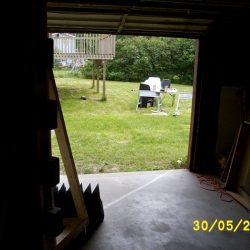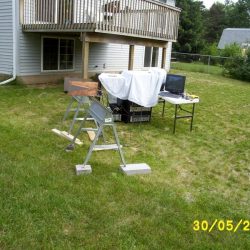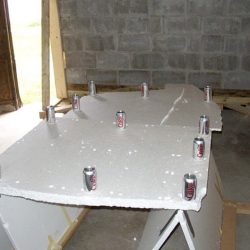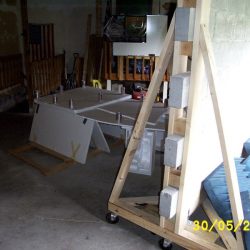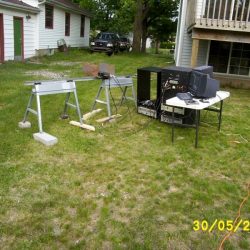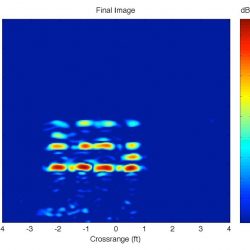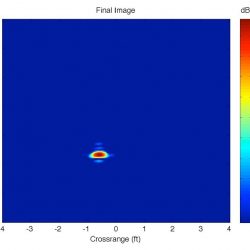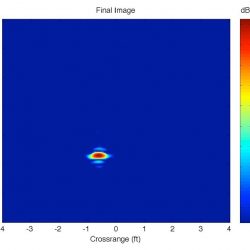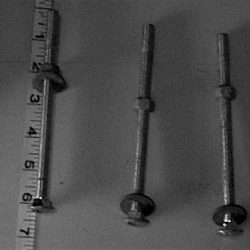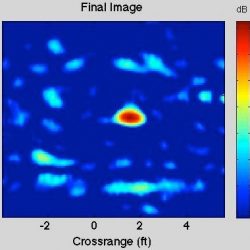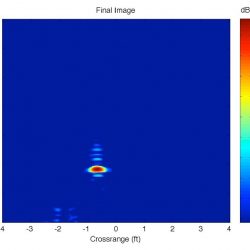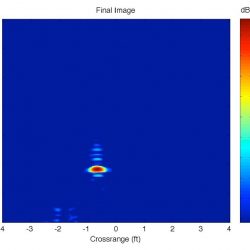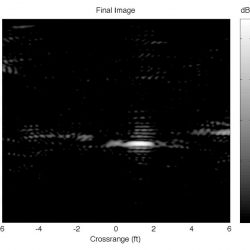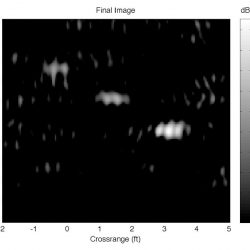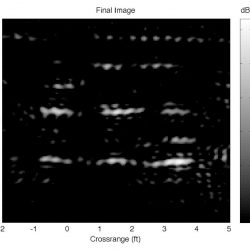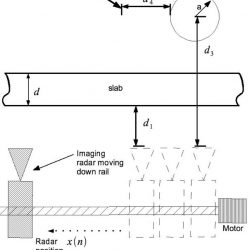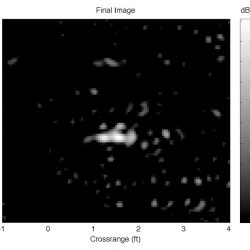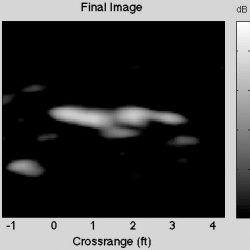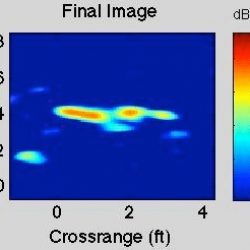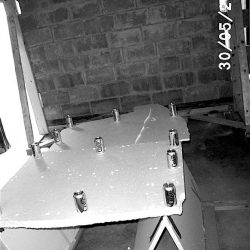Low-Power S-Band Rail SAR
UWB S-band Rail SAR Imaging System
This system was developed as part of my Ph.D. dissertation at the Michigan State University Electromagnetics Research Group.
- 2-4 GHz UWB S-band chirp
- Simultaneous transmit and receive (FMCW radar mode)
- 10 mW transmit power
- Range gate
- High sensitivity capable of imaging 6 inch tall bolts
- Imaging through lossy dielectric slabs
- Pico-watt radar operation
Abstract
A near real-time radar-based imaging system is developed in this dissertation. This system uses the combination of a spatially diverse antenna array, a high sensitivity range-gated frequency-modulated continuous wave (FMCW) radar system, and an airborne synthetic aperture radar (SAR) imaging algorithm to produce near real-time high resolution imagery of what is behind a dielectric wall. This system is capable of detecting and providing accurate imagery of target scenes made up of objects as small as 6 inch tall metallic rods and cylinders behind a 4 inch thick dielectric slab. A study is conducted of through-dielectric slab imaging by the development of a 2D model of a dielectric slab and cylinder.
The SAR imaging algorithm is developed and tested on this model for a variety of simulated imaging scenarios and the results are then used to develop an unusually high sensitivity range-gated FMCW radar architecture. An S-band rail SAR imaging system is developed using this architecture and used to image through two different dielectric slabs as well as free-space. All results are in agreement with the simulations. It is found that free-space target scenes could be imaged using low transmit power, as low as 5 picowatts. From this result it was decided to develop an X-band front end which mounts directly on to the S-band rail SAR so that objects as small as groups of pushpins and aircraft models in free-space could be imaged. These results are compared to previous X-band direct conversion FMCW rail SAR work. It was found that groups of pushpins and models could be imaged at transmit powers as low as 10 nanowatts.
A spatially diverse S-band antenna array will be shown to be developed for use with the S-band radar; thereby providing the ability for near real-time SAR imaging of objects behind dielectric slabs with the same performance characteristics of the S-band rail SAR. The research presented in this dissertation will show that near real-time radar imaging through lossy-dielectric slabs is accomplished when using a highly sensitive radar system located at a stand-off range from the slab using a free-space SAR imaging algorithm.
Publications
- G. L. Charvat, L. C. Kempel, E. J. Rothwell, C. Coleman, and E. L. Mokole, ``A through-dielectric radar imaging system," IEEE Transactions on Antennas and Propagation, vol. 58, Issue 8, pp. 2594-2603, August, 2010.
- G. L. Charvat, ``A Low-Power Radar Imaging System," Ph.D. dissertation, Dept. of Electrical and Computer Engineering, Michigan State University, East Lansing, MI, 2007.
- A Low-Power Radar Imaging System Dissertation Defense PPT
The S-Band Through-Slab Rail SAR Hardware
There were a total of 3 SAR imaging systems developed for this dissertation. The first is an S-band linear rail SAR which is capable of imaging targets in free space and behind lossy dielectric slabs at stand-off ranges. This system is a linear FM chirped radar, 2-4 GHz, using 10 milli-watts of transmit power, sensitivity of better than -125 dBm. All hardware was developed in my basement laboratory/garage machine shop.
The S-Band Through-Slab Rail SAR Imagery
There were a total of 3 SAR imaging systems developed for this dissertation. The first is an S-band linear rail SAR which is capable of imaging targets in free space and behind lossy dielectric slabs at stand-off ranges. This system is capable of SAR imaging 6” tall carriage bolts in free space using only 5 pico-watts of transmit power. It is capable of imaging groups of 6” tall carriage bolts or groups of aluminum soda cans behind a lossy dielectric slab using only 10 milli-watts of transmit power at a 30’ stand-off range from the slab. Shown here are SAR images of targets in free space at various levels of transmit power, and targets behind a lossy dielectric slab. Also shown here are the actual target scenes with various radar placements and dielectric slabs.
